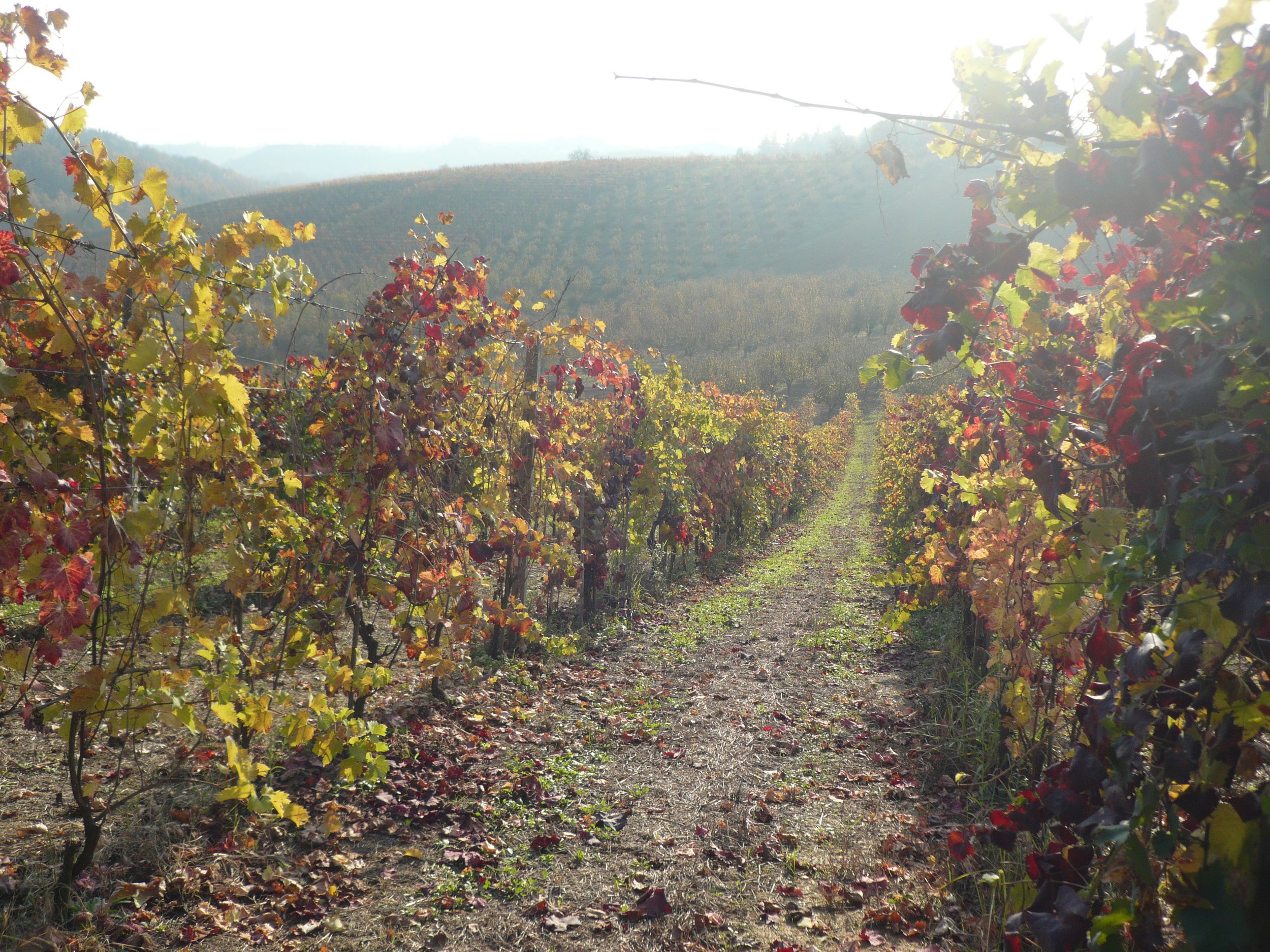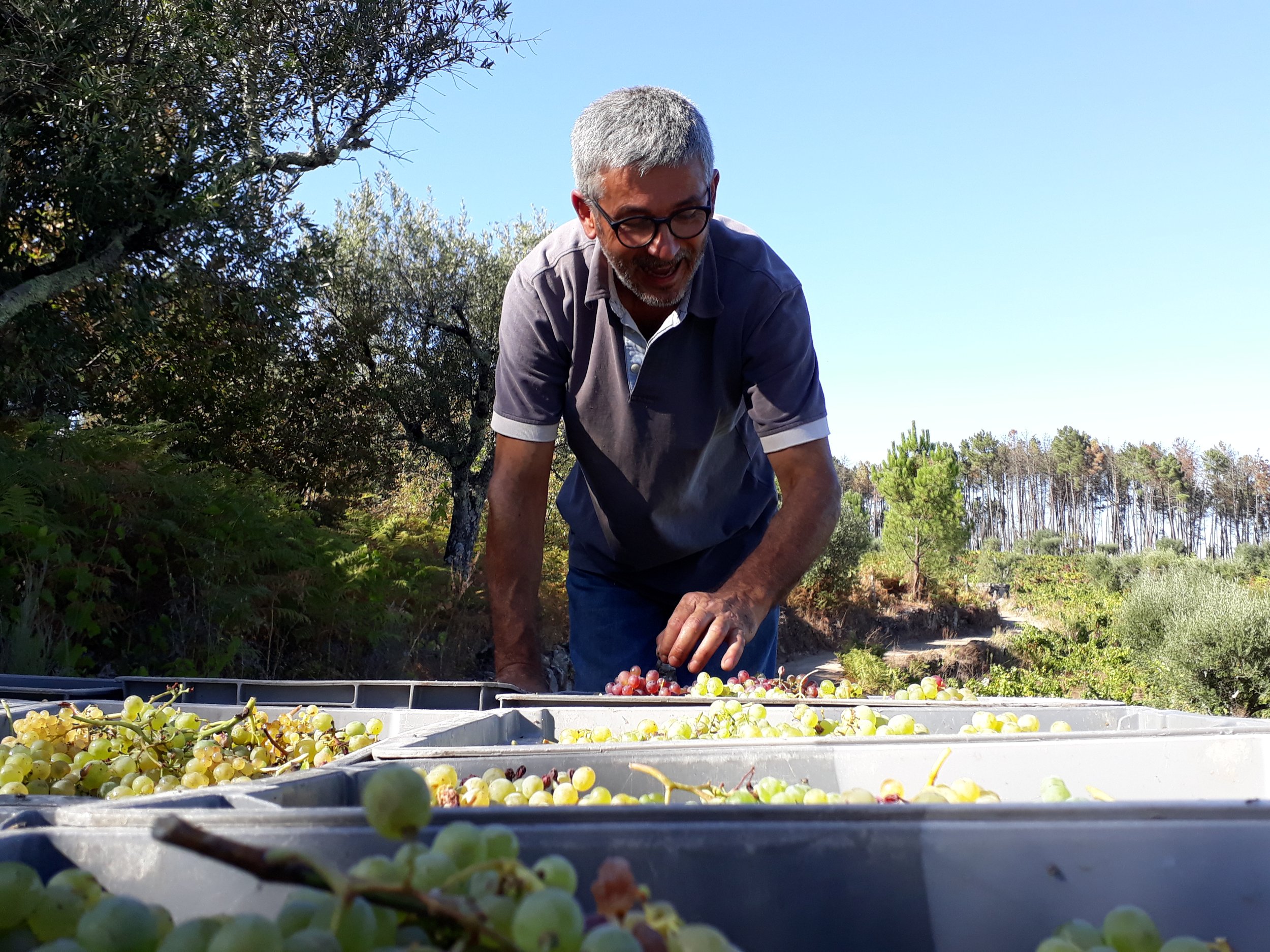
Quinta da Boavista
Dão, Portugal



“Dão is sometimes likened to Portugal’s Burgundy. It’s not because of any physical similarity between the regions, but because of the style of wine. Like red Burgundy, good Dão doesn’t rely on power for its effect, but instead aims at subtlety and finesse, a cause helped by the good natural acidity of the grapes… a good thing in a world of increased standardization and uniformity.” - Jamie Goode at wineanorak.com.
Located in Penalva do Castelo in the Dão, a region in north-central Portugal known for producing elegant, mineral-driven red wines, João Tavares de Pina is extremely proud of his wines. João’s 18th century family home is surrounded by his organically maintained vineyards, where the distance from the Atlantic and the shelter of the nearby granite mountains allows for mild winters and moderate summers. The vineyards, located at an altitude of 550 meters are a combination of deep granite soils, clay and schist that are ideal for his prized Jaen (Mencía), Touriga Nacional and rare Pinheira (Rufete).
The vineyards are surrounded by forests of oak and eucalyptus, and João works hard to maintain the natural biodiversity which includes chamomile, clover, serradella, grass, lavender and wildflowers. It is here he seeks to create wines of great intensity, expression, minerality, and finesse, hoping to live up to the 19th century adage of the Dão being the “Burgundy of the South.” João will tell you all he needs to make wine is grapes, water to clean his equipment and a touch of sulfur at bottling. He rarely uses products in the vineyard, and when he does he only uses topical organic treatments. In today’s world, this is about as minimal as it gets. João isn’t following a natural wine trend. This is how he and his father have always done it.
Our Selections
Boavista Dão “Rufia” Orange 2023
The sixth vintage of João’s Orange wine has developed a cult-like devotion. This iteration is a blend of 53% Cerceal Branco, 20% Encruzado. 15% Siria (Roupeiro), 6% Boal (Malvasia Fina) and 6% Bical, The vines are planted to the typical granitic soils of the Dão, mixed with old marine sediment and clay. The vineyards are all organic and have a mix of chamomile, clover, serradella and even eucalyptus planted.
For the 2023 vintage, the grapes are co-fermented on skins with maceration lasting 3 weeks. According to João, “there isn’t any rule for maceration time; I taste, and when I feel the balance between tannins, acidity, dryness and alcohol provides the right texture, we press and separate solids from the wine.”
For all our wines, we pursue freshness and acidity. We are very focused on acidity. We harvest as early as possible, with the intention to do have alcohol wines with good freshness and nice energy. Every year after the harvest, I always say I missed a week…Since the beginning of harvest, acidity is dropping, and sugar increasing, so, for me, the problem is acidity, never sugar! Extraction is lower when alcohol is low. That’s why this orange only 11% abv!
The wine is beautiful. Light golden orange. Rich and deep aromas of apricot, peach, almonds and dried fruits. The palate is medium bodied with nice balancing tannin.
Boavista Dão Vinho Tinto “Lero-Lero” 2022
The 2022 Lero-lero, meaning “chit-chat” or “idle talk” in Portuguese, is a blend of 95% Jaen (Mencia) and 5% Rufete. Weighing in at only 11.1% alcohol, the Lero-Lero spends 2-3 days on the skins in open top stainless steel fermentation vessels (submerged cap). Fermentation lasted 8-9 days followed by another eight months in tank. The grapes all came from estate fruit across 13ha. of vineyards on mostly granitic soils with some clay and marine sediments.
The wine has a lovely red light color with a hint of black and red raspberry on the nose. The palate is juicy and bright with brambly berry fruit and plenty of acidity on the finish. This is a lively, glou glou style, perfect with a touch of chill
Alc: 11.1% | PH: 3.93 TA: 4.93 RS: less than 0.3 GL Sulfur: 30mg/L
Boavista Dão Vinho Tinto “Rufia” 2021
50% Tinta Pinheira (Rufete), 27% Jaen (Mencía), and 21% Touriga Nacional from organic vineyards planted in granitic soils with some schist. This blend includes an indigenous variety commonly used in port production called Tinta Pinheira, or Rufete, the same grape popular in the Castilla Y Leon region of Spain. Rufia! is a ruffian, one who follows his or her own path. The wine spends 7 days on the skins and spontaneously ferments in open, non-temperature controlled stainless steel tanks until completely dry. The wine rests on the lees for 9 months in used 400L French oak barrels after malolactic fermentation occurs. Unfiltered. Minimal sulfur addition at bottling. Not chaptalized or acidified; no use of any other additives, including enzymes. This is a quaffable red with remarkable concentration on the nose, excellent lift on the palate and precise, red berry aromas and flavors.
pH 3.78 | TA 5.8 g/L | Alc 11.5% | Residual Sugar: 2.4 g/L | Total SO2 27 mg/L | Free SO2 less than 13 mg/L
Boavista Dão Encruzado Branco “Atinado” 2022
100% Encruzado, arguably Portugal’s finest white grape variety, from a one-hectare organic plot of south facing vines planted on old granitic soils. The grapes were harvested in early September, de-stemmed and kept on the skins for 48 hours before fermentation. The wine was then aged for eight months on lees in 1250L and 1800L old chestnut casks. The wine goes through spontaneous malolactic fermentation and is bottled unfined and unfiltered, with only a small addition of SO2. Medium gold in color with aromas of pear, quince, tangerine and a deep mineral note. The palate is well-structured and powerful, bringing to mind expressions of Saumur Blanc with texture and clarity.
Boavista Dão Cerceal/Bical Branco “Euforia” 2022
57% Bical and 43% Cerceal Branco. A very salty, and quite interesting wine. The wine has a distinct mineral aroma, with tangerine, floral chamomile and jasmine. There is a distinctive salinity that keeps the wine super fresh.
Vineyard sorting and manual triage in sorting table, then bunches pass through the de-stemmer. After 24 hours of skin-contact and the grapes are pressed into stainless steel lagar where native spontaneous fermentation begins without temperature control. Fermentation lasts between 8 to 10 days until it is completely dry. The wine ages on lees for about 9 months in chestnut cask with spontaneous malolactic fermentation. The wine is bottled unfined and unfiltered with only a small addition of of SO2.
pH 3.37 | TA 5.4 g/L | Alc 11.2% | Total SO2 27 mg/L | Free SO2 13 mg/L
Boavista Dão Mencia “Euforia” 2022
This is how João prefaces his old-school Euforia Mencia: “I am angry with my region for its disinterest in the Jaen variety and that's why I started to use [the] synonym ‘Mencia’ once it is cherished all over the world! Now I reissue this wonderful variety that is so connected to our history. This time with an even greater soul, since this Mencia was aged in Chestnut Casks as traditionally as once it was made in Dão several years ago…”
This is a special expression of Mencia indeed. The vineyard sits at 550m elevation on granitic soils with marine sediment and a bit of shale and clay. It’s a no-till vineyard with lots of cover crops, grasses, and flowers like chamomile and lavender. The grapes are harvested in early September, usually within the first two weeks, and are manually sorted and then destemmed before crush. Native fermentation lasts about 8-10 days in 1250L chestnut cask. The wine is pressed off the skins and continues to age in chestnut cask for 12 months on the lees. After a small addition of SO2, the wine is racked, and bottled unfined and unfiltered. 133 cases produced.
Alc 12.0% | pH 3.71 | TA 4.7 g/L | Total SO2 25 mg/L | Free SO2 <15 mg/L
Boavista Dão Vinho Tinto “Terras de Tavares” 2019
The limited production 2019 Terras de Tavares Tinto is an excellent follow-up to the library release 2008 vintage. Field Blend Selections has been fortunate enough to offer both the 2002 and 2008 vintages in the past, both of which impressed us with their traditional profiles and stylistic similarities to other iconic old-school Iberian wines, particularly Lopez de Heredia Viña Tondonia.
The 2019 Terras de Tavares Tinto is a blend of 81% Touriga Nacional, 13% Jaen (Mencia), and 6% Rufete, all from organic estate vineyards, planted to old granitic soils at an altitude of 550m. The grapes were de-stemmed, and spontaneous fermentation took place in traditional open-top lagares with submerged cap for 15 days before pressing off the skins. Following fermentation, the wine was aged in chestnut casks for 12 months, followed by an additional six months in bottle before release. Chestnut wood is an old-fashioned vessel for aging wine that has seen its use rise recently; it gently micro-oxygenates the wine while offering an elegant tannic structure.
The wine features a generous nose of plum, dark berries, leather and spice. The palate is warm and soft, with ripe, dark fruit flavors and notes of baking spices. The tannins are relatively soft while adding just enough structure to round out the finish. This is a remarkable wine that, while approachable now, is destined to be a classic. Only 28 cases imported.
13% Alc | 1.8 g/L RS | 6.23 g/L TA | pH 3.56 | 35 mg/L Total SO2 | >15 mg/L Free SO2
Boavista Dão Vinho Tinto “Terras de Tavares” 2002 (Library)
The 2002 library release of Terras de Tavares Tinto is a blend of 60% Jaen (Mencia) and 40% Touriga Nacional from Joao’s organic estate vineyards. Like the 2019 these vines are planted to old granitic soils at an altitude of 550m.
This is a special site as the vineyard's floor is covered with flowers like chamomile, clover, serradella and several types of grasses. At end of each row there is lavender which act as natural defense for vines against fungi and any other disease. The vines are surrounded by oaks , pines, and eucalyptus. There are tons of birds, bees, ladybugs, and on the soil, plenty of ants and earthworms.
For the 2002 vintage, the two varieties were harvested the same day in late September. The grapes were then de-stemmed and co-fermented with native yeasts in traditional open-top lagares. The wine ferments on skins for 10 days before pressing. Following fermentation, the wine was aged in stainless steel tank with lees contact of 6 months before racking and aging an additional 3 years in old 400L oak barrels.
Aromatically charged with complex, broad, spicy, floral high tones with cola, coriander and red fruit nuance. Beautifully poised in the mouth, soft but firm, with fine, long, well managed tannins. A very long, very elegant wine that shows full potential of the vineyard. It shows how Dao can lean in the direction of mature Barolo. Give it a couple of hours to breathe properly.
12.9% Alc | 5.22 g/L TA | pH 3.70 | 49 mg/L Total SO2 | > 13 mg/L Free SO2








